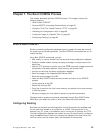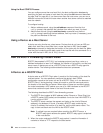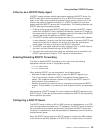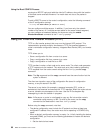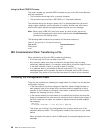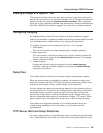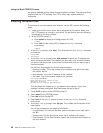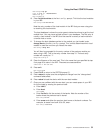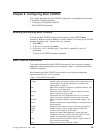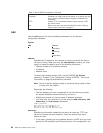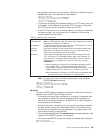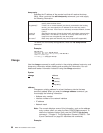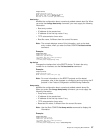
be globally readable and the dump directories globally writable. The boot and dump
functions use the TFTP protocol. Your TFTP server may impose additional
restrictions.
Installing Software/Code
To download a new load module from a server into the IBD, perform the following
steps:
1. Install your load file into a server that is reachable by the device. Make sure
the TFTP daemon is running in your server. On the device, issue the following
commands at the router console:
2. At the OPCON prompt (*):
a. Enter status to display the Config process ID (PID).
* status
b. Enter talk and the Config PID to access the Config> command
environment.
* talk 6
3. At the Config> prompt, enter boot. This will access the Boot config> command
environment.
Config> boot
Boot config>
4. At the Boot config> prompt, enter add address to specify an IP address over
which the device can boot. This needs to be done only once for each interface
you want to be able to use. It should not be done each time you want to get a
new load module.
You will then be prompted for the following information:
v Interface number. This is the number of the interface over which the router
will transfer the file.
v New address. This is the IP address of this interface.
v Net mask. This is the network mask for this interface.
Boot config> add address
Which interface is this address for [0]?
New address [0.0.0.0] ?
Net mask for this interface [255.255.255.0]?
The next steps are needed only if you added a boot address. If your boot
address is already configured, skip these steps and go to step 9.
5. Press Ctrl-P to return to the OPCON prompt (*).
6. Enter restart at the OPCON prompt.
7. Enter talk and the Config PID.
8. Enter boot at the Config> prompt to return to the Boot config> command
environment.
9. At the Boot config> prompt, enter tftp get. This initiates the file transfer of the
load module.
You will be prompted for the following information:
v Local filename. For the local filename, enter the filename of the new load in
the IBD.
v Remote host. For the remote host, enter the IP address of the server.
v Host filename. For the host filename, specify the entire path and filename on
the host machine.
Using the Boot CONFIG Process
90
MRS V3.2 Software User’s Guide




